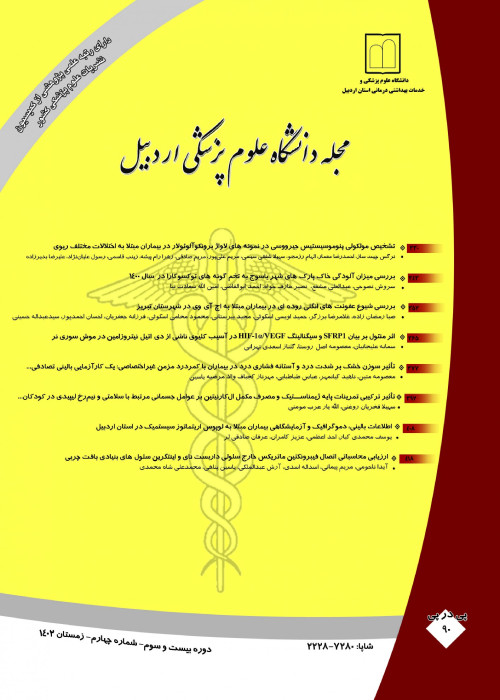Taxonomic and phylogenetic position of Rinocladiella mackenziei (Ramichloridium mackenziei), causal agent of cerebral abscission in human
Abstract:
Back ground and
Aim
Cerebral phaeohyphomycosis in humans is caused by fungal agent which belongs to black yeasts. The disease is apparently restricted to Middle East been reported from Saudi Arabia, occupied Palestine and Qatar. The disease has not been recorded from Iran yet or its existence has not been noticed. Ramichloridium mackenziei is responsible for this disease, which belongs to fungal order chaetothyriales. Members of this order are mainly opportunistic pathogens on humans and animals causing a wide range of infections such as chromoblastomycosis (cutaneous, subcutaneous) and cerebral phaeohyphomycosis. Species recognition and delineation in members of this order is based on morphological features of asexual stage (anamorph). This order encompasses several genera such as Ramichloridium, Rhinocladiella, Exophiala, Veronaea, Cladophialophora. Some members of this order are morphologically similar to plant pathogenic or saprotrophic species and there is no clear-cut morphological differences among these genera. Accurate identification of human pathogenic species in both clinics and natural ecological niches will play important role in our understating on ecology of these fungi.Materials And Methods
In present study, 24 isolates belonging to 15 species from three genera viz., Ramichloridium, Rhinocladiella and Veronaea were subjected to morphological and molecular examinations. Morphological features were evaluated on malt extract agar, using a slide culture technique. Phylogenitc relationship among isolates was inferred based on sequence data from two genomic regions of ribosomal DNA including partial sequences from ITS-rDNA and LSU-rDNA. Results
Phylogeny inferred from DNA sequence data placed isolates in two groups. Clade one included Rhinocladiella and Veronaea together with Ramichloridium mackenziei and R. fasiculata, R. anceps and Rhinocladiella basitona which all belong to the order Chaetothyriales. The second clade included type species of genus Ramichloridium (R. apiculatum) together with other plant pathogenic Ramicholridium species which belong to the order Capnodiales. Putting together DNA sequence data, ecology and morphology, Rhinocladiella is an appropriate genus to accommodate Ramichloridium mackenziei. Conclusion
taxonomic and phylogenetic position of Ramichloridium mackenziei is ascertained in Chaetothyriales. Combination of DNA data set together with morphology and ecology is indispensable in identification of human pathogenic Chaetothyriales. Current work is good starting point towards studying importance and diversity of these fungi in Iran.Language:
Persian
Published:
Journal of Ardabil University of Medical Sciences, Volume:10 Issue: 36, 2010
Page:
95
magiran.com/p786975
دانلود و مطالعه متن این مقاله با یکی از روشهای زیر امکان پذیر است:
اشتراک شخصی
با عضویت و پرداخت آنلاین حق اشتراک یکساله به مبلغ 1,390,000ريال میتوانید 70 عنوان مطلب دانلود کنید!
اشتراک سازمانی
به کتابخانه دانشگاه یا محل کار خود پیشنهاد کنید تا اشتراک سازمانی این پایگاه را برای دسترسی نامحدود همه کاربران به متن مطالب تهیه نمایند!
توجه!
- حق عضویت دریافتی صرف حمایت از نشریات عضو و نگهداری، تکمیل و توسعه مگیران میشود.
- پرداخت حق اشتراک و دانلود مقالات اجازه بازنشر آن در سایر رسانههای چاپی و دیجیتال را به کاربر نمیدهد.
In order to view content subscription is required
Personal subscription
Subscribe magiran.com for 70 € euros via PayPal and download 70 articles during a year.
Organization subscription
Please contact us to subscribe your university or library for unlimited access!


